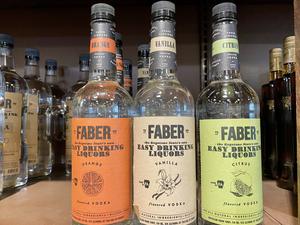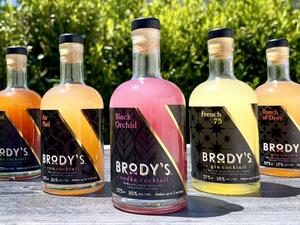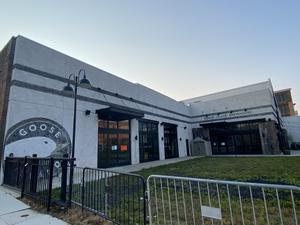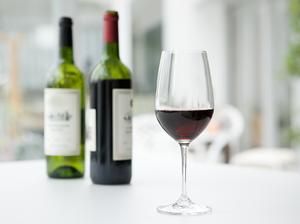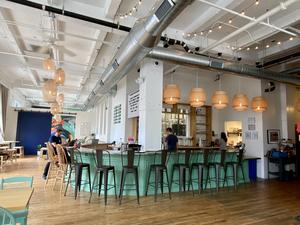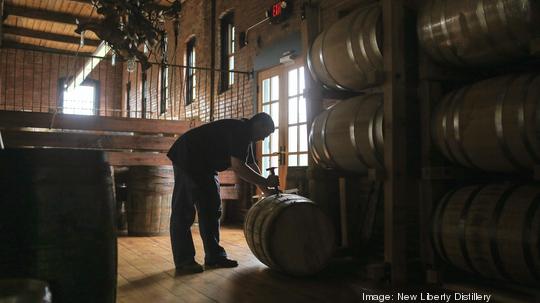
When Covid-19 hit Greater Philadelphia last year and temporarily shuttered state-run liquor stores, Olde Kensington business New Liberty Distillery immediately jumped into a new world of digital sales by launching an online store.
As part of that strategy, the company offered competitive flat-rate shipping despite noteworthy costs associated with sending its products outside city limits. Now that move is paying off big time, President Robert Cassell said, crediting the tactic with ultimately driving stronger sales than the distillery's pre-pandemic figures.
“We just said OK, screw it, we’re shipping to people all over the state regardless of if we made money on those shipments or not,” Cassell said. “It was just based on the feeling of saying this is a moment to expose your brand to more consumers, to be able to be that brand that someone can pull from regardless of if we make money on that shipping.”
Year-over-year sales for New Liberty’s staple Kinsey bourbon brand have increased by 54.5%, Cassell told the Business Journal, citing figures from a July report by the Pennsylvania Liquor Control Board that details 2021 statewide whiskey sales through June 27. The distillery's Kinsey Rye, meanwhile, holds a 10.9% market share of the state’s rye whiskey sales category, according to the PLCB report, lagging not far behind some national brands.
For example, Sazerac rye — produced by Sazerac Company Inc. at Buffalo Trace Distillery in New Orleans — held 13% of the market share in the same category, per the report. In the “super premium” segment of the rye whiskey category, Jim Beam rye held a 12.1% market share.
A small company like New Liberty, which was founded in 2014, claiming more than 10% of a statewide liquor sales category is “insane,” Cassell said.
“When you look at the craft distilleries on a national level, they're small, they don't have huge retail distribution and just being able to, in a quick period of time, break through in that manner is not common, particularly in the whiskey category,” he added. “While I think consumers are looking to experiment and try other brands, that degree in that period of time is very, very rare.”
New Liberty’s foothold in the category is particularly impressive, he added, because state liquor stores were either closed or operating on an order-ahead pick-up basis only for much of 2020 because of the pandemic. That means Kinsey's market share achievement took hold as consumers were forced to call into liquor stores and request specific products.
The inconvenience of that process would typically prompt customers to default to a well-known national brand, Cassell said, meaning a noteworthy portion of whiskey drinkers asked for New Liberty rye by name.
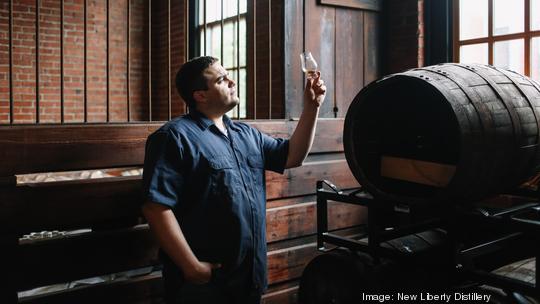
As a small business owner, “that's the kind of stuff that gives me goosebumps,” Cassell said.
Sales channels like online and wholesale distribution have jumped ahead of pre-Covid metrics, he noted, and New Liberty is working to reopen its indoor bar at 1431 Cadwallader St.
The company also forged ahead with producing limited-release products during the pandemic, and has experienced record sales for specialty blends. Entire barrel releases have sold out in less than 15 minutes, Cassell said, whereas pre-pandemic the products would have been sold over a few months in the tasting room.
With ongoing supply chain shortages, New Liberty is keeping up with demand because of a “tactical gamble” it took at the start of 2021 when it heavily invested in supplies like glass to guarantee its runway and ability to ship and sell, he added. In January the company also began canning cocktails in varieties like vodka soda and gin and tonic. Canned drinks were in the works before the pandemic but the health crisis accelerated their launch.
New Liberty’s five-year goal is to “create a much larger, robust whiskey production facility and brand home in Philadelphia” while having a couple barrel storage houses located in the rural suburbs, Cassel said.
Throughout the last year, New Liberty has made strides breaking into New Jersey and Delaware. It looks to continue that growth in addition to expanding into Western Pennsylvania in cities like Erie and Pittsburgh, Cassell said.
“Our plan as a company has always been starting with the epicenter [in Philadelphia] and going out,” he added.
